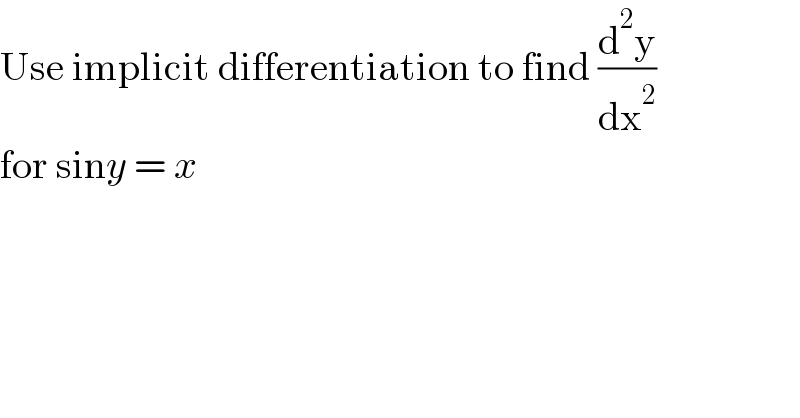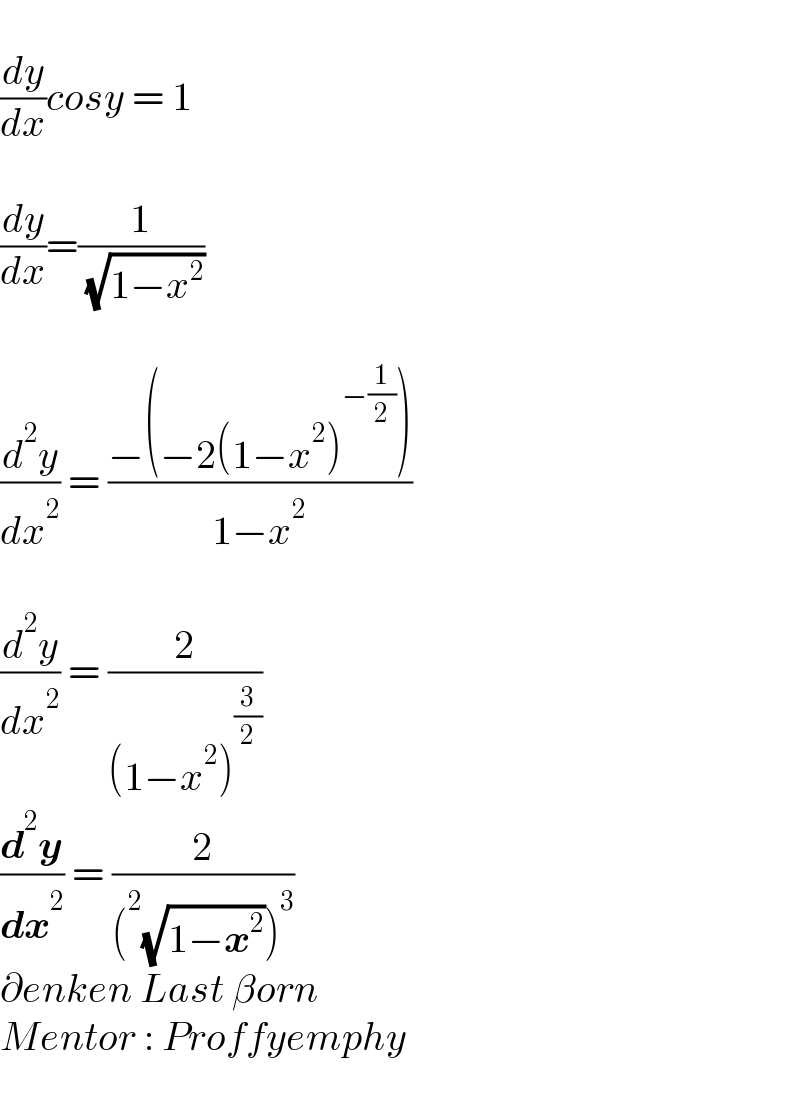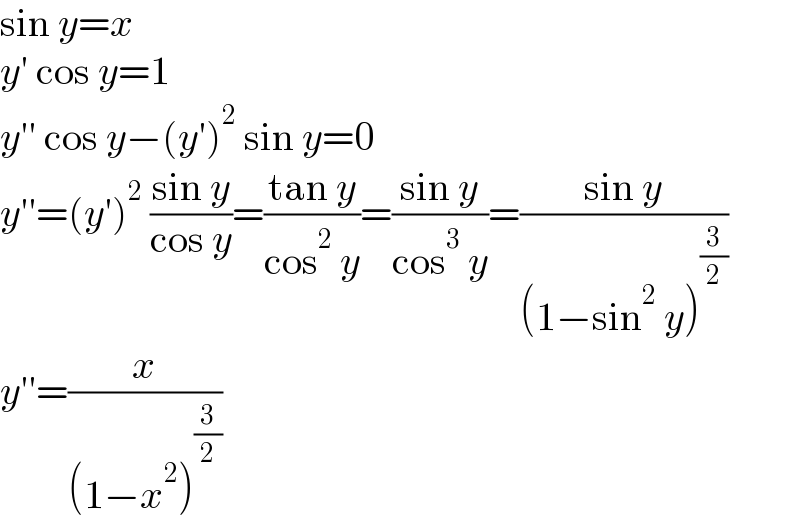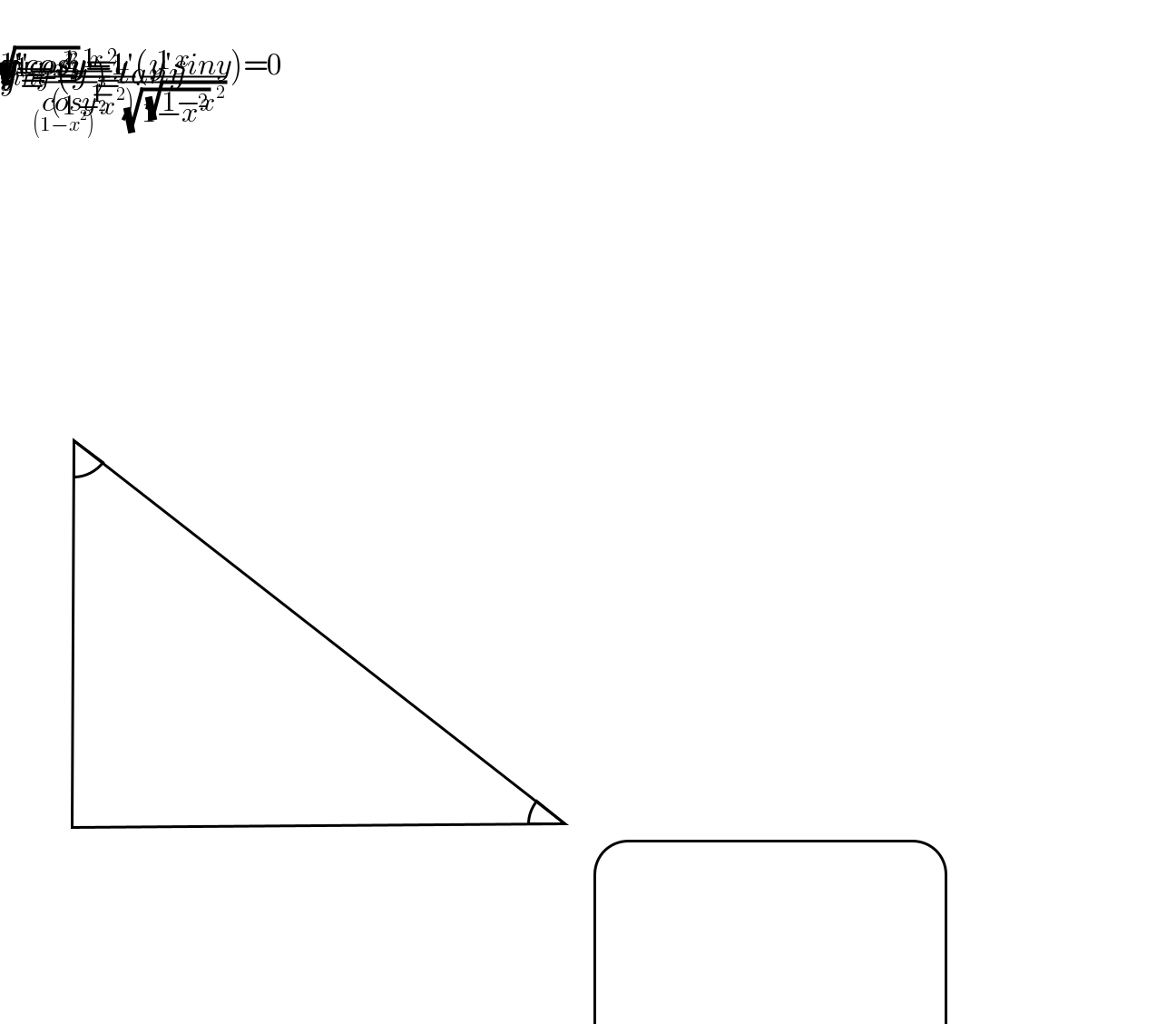
Question and Answers Forum
Question Number 184040 by pete last updated on 02/Jan/23

Answered by cortano2 last updated on 02/Jan/23

Answered by Yhusuph last updated on 02/Jan/23

Commented by Frix last updated on 02/Jan/23

Answered by mr W last updated on 03/Jan/23

Commented by pete last updated on 02/Jan/23

Commented by cortano1 last updated on 03/Jan/23
![from sin y = x we get { ((sec y=(1/( (√(1−x^2 )))))),((tan y=(x/( (√(1−x^2 )))))) :} now y′′= (x/((1−x^2 )(√(1−x^2 )))) = [(1/( (√(1−x^2 )))) ]^2 .(x/( (√(1−x^2 )))) = sec^2 y tan y](Q184111.png)
Commented by mr W last updated on 03/Jan/23

Commented by pete last updated on 04/Jan/23

Answered by manxsol last updated on 02/Jan/23

Commented by mr W last updated on 03/Jan/23

Commented by mr W last updated on 03/Jan/23

Commented by ARUNG_Brandon_MBU last updated on 03/Jan/23

